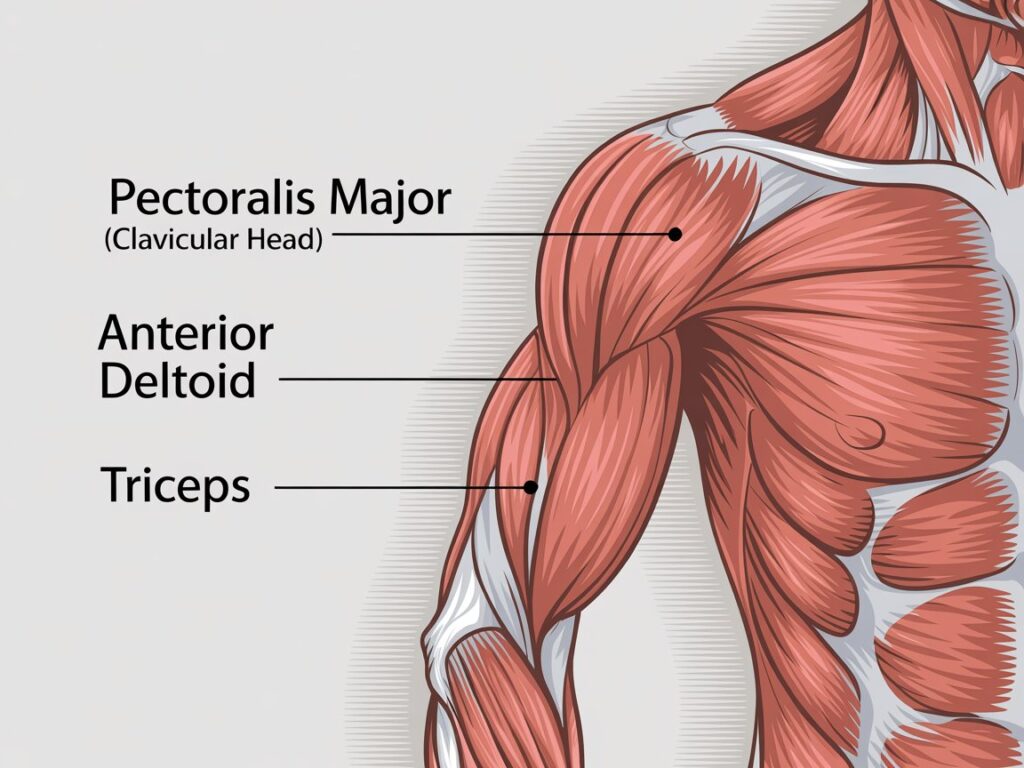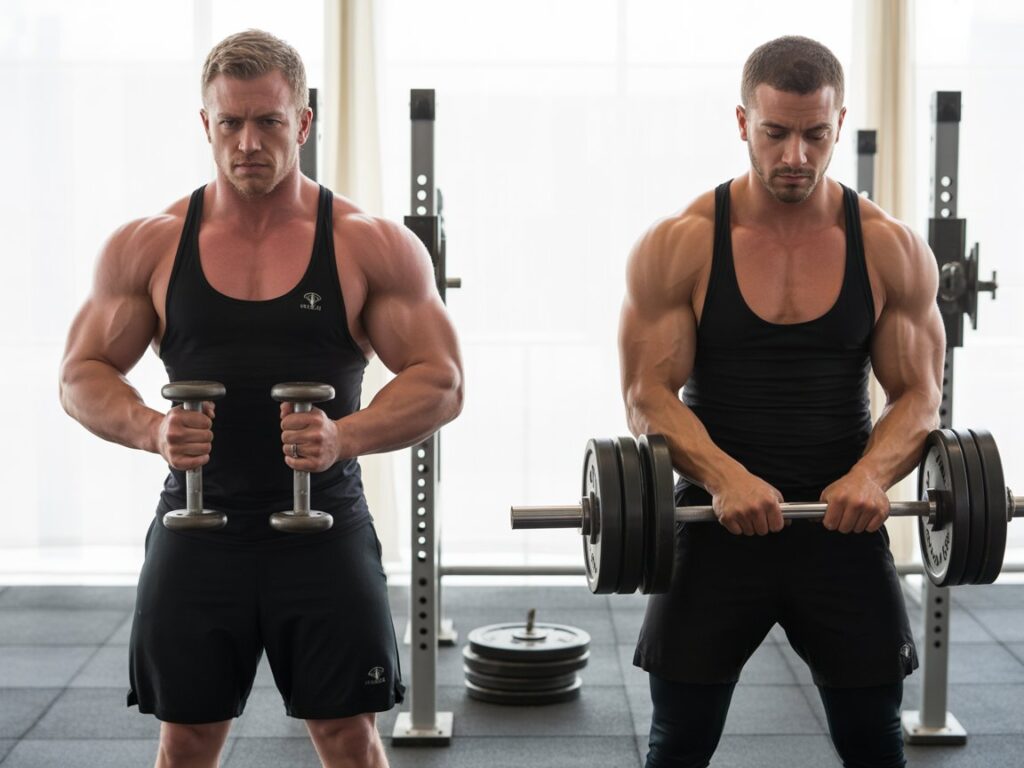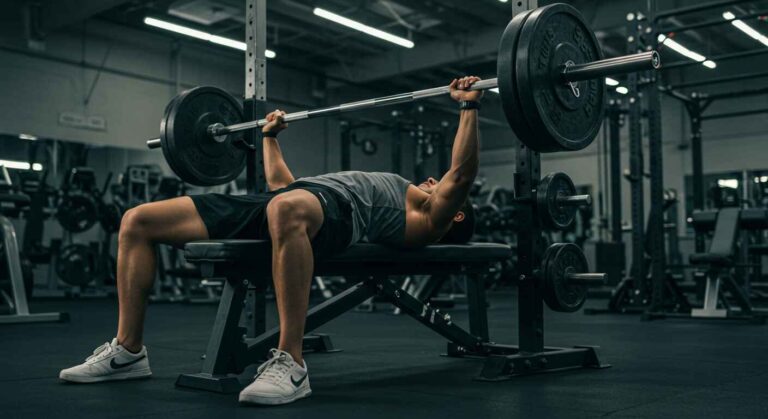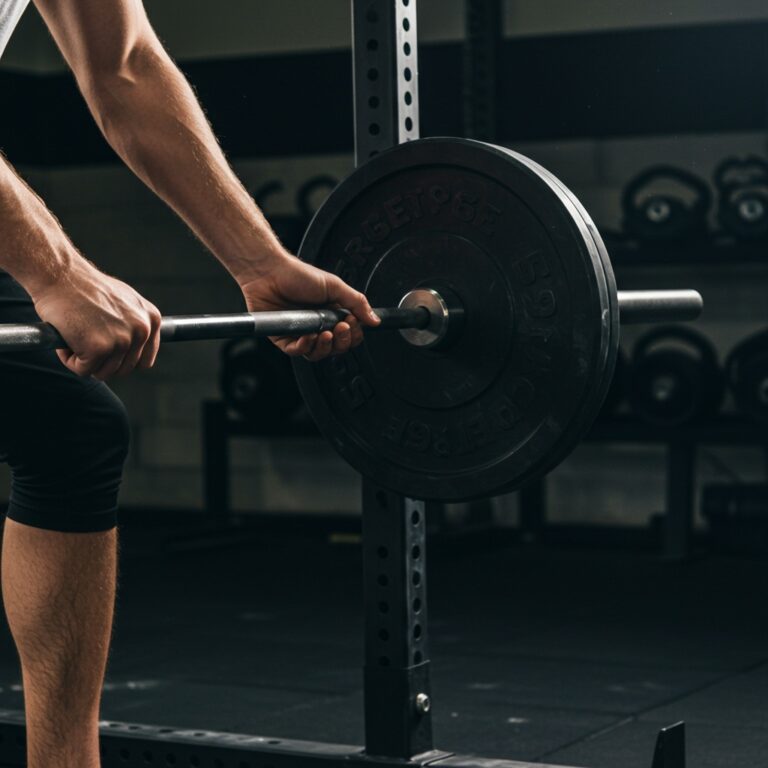If you’ve ever looked in the mirror and wished for a fuller, more developed upper chest, you’re not alone. Building that coveted “upper shelf” can feel like a mystery. The flat bench is great, but it doesn’t always hit the spot. This is where the dumbbell incline bench press becomes your greatest ally.
This powerhouse exercise is a cornerstone for anyone serious about building a balanced, aesthetically pleasing, and powerful physique. It’s more than just another chest day exercise; it’s a specific tool designed to target and sculpt the upper portion of your pectoral muscles like nothing else.
In this comprehensive guide, we’ll break down everything you need to know to master the dumbbell incline bench press. We’ll cover flawless execution, the muscles you’re actually working, common pitfalls to sidestep, and how you can use it to drive serious muscle growth.
Why the Incline Dumbbell Press is a Chest-Building Game Changer
So, what makes this exercise so special? While the traditional barbell bench press is a fantastic overall mass builder, using dumbbells on an incline offers a unique set of advantages that can accelerate your progress and improve your overall strength.
Isolates the Upper Chest
The primary benefit of setting the bench on an incline is its ability to target the clavicular head of the pectoralis major—your upper chest. By adjusting the angle, you shift the focus of the lift upwards, putting more tension on those hard-to-reach muscle fibers. This targeted stress is the key stimulus needed for hypertrophy (muscle growth) in that specific area.
Promotes Symmetrical Strength
Have you ever noticed one side of your chest is slightly stronger or larger than the other? This is a common muscle imbalance. The dumbbell incline bench press forces each side of your body to work independently. Your stronger side can’t compensate for the weaker one, leading to more balanced strength and muscular development over time.
Enhances Range of Motion and Joint Health
Unlike a barbell, which locks your hands in a fixed position, dumbbells allow for a more natural arc of motion. Your hands can rotate and travel in a path that is more comfortable for your shoulder and elbow joints. This greater range of motion can lead to a better muscle stretch at the bottom of the movement and a stronger peak contraction at the top, all while being kinder to your joints.
Muscles Worked: More Than Just Your Chest

The dumbbell incline bench press is a compound exercise, meaning it engages multiple muscle groups simultaneously. Understanding what you’re working helps you create a stronger mind-muscle connection.
- Pectoralis Major (Clavicular Head): This is the star of the show. The incline angle specifically loads the upper portion of your chest.
- Anterior Deltoids: Your front shoulder muscles are heavily involved as a secondary mover, assisting in pressing the weight up.
- Triceps Brachii: These muscles on the back of your arms are responsible for extending your elbows to lock out the press at the top.
- Serratus Anterior: This muscle, located on the side of your ribcage, helps stabilize your scapula (shoulder blades).
- Core: Your abs and obliques work to keep your torso stable and rigid throughout the lift.
How to Master the Dumbbell Incline Bench Press: A Step-by-Step Guide
Proper form is non-negotiable. It ensures you’re targeting the right muscles and, more importantly, keeps you safe. Follow these steps for flawless execution.
Step 1: Set Your Foundation
Before you even pick up the weights, your setup is crucial.
- Bench Angle: Set an adjustable bench to a 30- to 45-degree angle. A 30-degree angle is often the sweet spot for maximum upper chest activation with minimal front deltoid takeover. Anything higher than 45 degrees turns the exercise into more of a shoulder press.
- Dumbbell Selection: Choose a weight that challenges you but allows you to maintain perfect form for your desired rep range (typically 8-12 reps for muscle growth).
Step 2: Getting into Position
Safely getting the dumbbells into the starting position is a skill in itself.
- Sit on the bench with a dumbbell on each knee.
- In one smooth motion, kick one knee up to help hoist the dumbbell to your shoulder as you simultaneously lie back on the bench.
- Immediately do the same with the other knee.
- Plant your feet firmly on the floor, wider than your hips. Your back should have a slight, natural arch, with your shoulder blades retracted and pulled down, as if you’re trying to tuck them into your back pockets.
Step 3: The Press (Concentric Phase)
This is the “up” phase of the lift.
- Press the dumbbells straight up over your upper chest until your elbows are nearly locked out. Don’t let the dumbbells touch at the top; this can release tension.
- Focus on squeezing your chest muscles together. Think about bringing your biceps towards each other.
- The path of the dumbbells should form a slight arc, moving from wider at the bottom to closer together at the top.
Step 4: The Descent (Eccentric Phase)
Controlling the weight on the way down is where much of the muscle-building magic happens.
- Slowly lower the dumbbells back down to the sides of your chest in a controlled manner. This should take about 2-3 seconds.
- Allow for a deep stretch in your chest at the bottom, but don’t go so low that you feel pain or instability in your shoulders. Your elbows should be tucked at a roughly 45- to 60-degree angle relative to your torso.
Step 5: Breathing
Your breathing pattern provides stability and power.
- Exhale forcefully as you press the dumbbells up.
- Inhale deeply as you lower the dumbbells down.
Common Dumbbell Incline Bench Press Mistakes (and How to Fix Them)

Even seasoned lifters can make these errors. Avoiding them will maximize your gains and minimize your risk of injury.
- Mistake #1: Flaring Your Elbows. Letting your elbows flare out to 90 degrees puts immense stress on your shoulder joints.
- The Fix: Tuck your elbows to a 45- to 60-degree angle from your torso. This protects your shoulders and engages your chest more effectively.
- Mistake #2: Bouncing the Weight. Using momentum by bouncing the dumbbells at the bottom of the rep negates the muscular effort.
- The Fix: Pause for a split second at the bottom of the movement before powerfully pressing up. Maintain control throughout.
- Mistake #3: Not Controlling the Negative. Dropping the weight quickly is a missed opportunity for growth and increases injury risk.
- The Fix: Actively resist gravity on the way down. A slow, 2-3 second eccentric phase builds muscle and control.
People Also Ask: Your Top Incline Press Questions
What angle is best for the incline dumbbell press?
The optimal angle is generally between 30 and 45 degrees. Research from the Journal of Strength and Conditioning Research indicates that the clavicular (upper) chest fibers are highly activated in this range. A 30-degree incline is a perfect starting point for most people to maximize chest engagement while minimizing shoulder strain.
Is incline or flat dumbbell press better for the chest?
Neither is “better”—they are different tools for different goals. The flat press focuses on the entire pectoral muscle, making it a great overall mass builder. The incline press specifically targets the upper portion. A complete chest workout routine should ideally include both flat and incline movements for balanced development.
How many reps of incline dumbbell press should I do?
Your rep range depends on your fitness goals:
For Hypertrophy (Muscle Growth): Aim for 3-4 sets of 8-12 repetitions.
For Muscular Endurance: Aim for 2-3 sets of 15-20 repetitions.
For Strength: Aim for 3-5 sets of 4-6 repetitions with a heavier weight.
Find Your True Strength: Calculate Your One-Rep Max
As you get stronger, progressive overload—gradually increasing the demand on your muscles—is essential. But how do you know what weight to use? Understanding your one-rep max (1RM) is a fantastic way to gauge your strength and program your workouts effectively.
Instead of risking injury by testing a true 1RM, you can use a safe and reliable tool to estimate it.
Ready to find out how strong you really are?
Our user-friendly 1 Rep Max Calculator takes the guesswork out of the equation. Simply input a weight you can lift for a certain number of reps, and the tool will instantly estimate your 1RM, allowing you to tailor your training weights for maximum results.
Final Thoughts
The dumbbell incline bench press is more than just an exercise; it’s a solution. It’s the key to unlocking a fuller upper chest, building symmetrical strength, and improving your overall pressing power. By focusing on perfect form, choosing the right angle, and staying consistent, you can transform your physique.
Add it to your routine, master the technique, and watch as that stubborn upper chest begins to grow.






